- Details
- Hits: 9009
Station: Sault Ste. Marie, MI
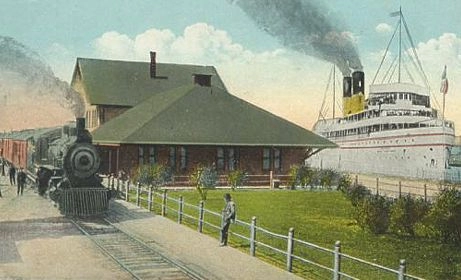
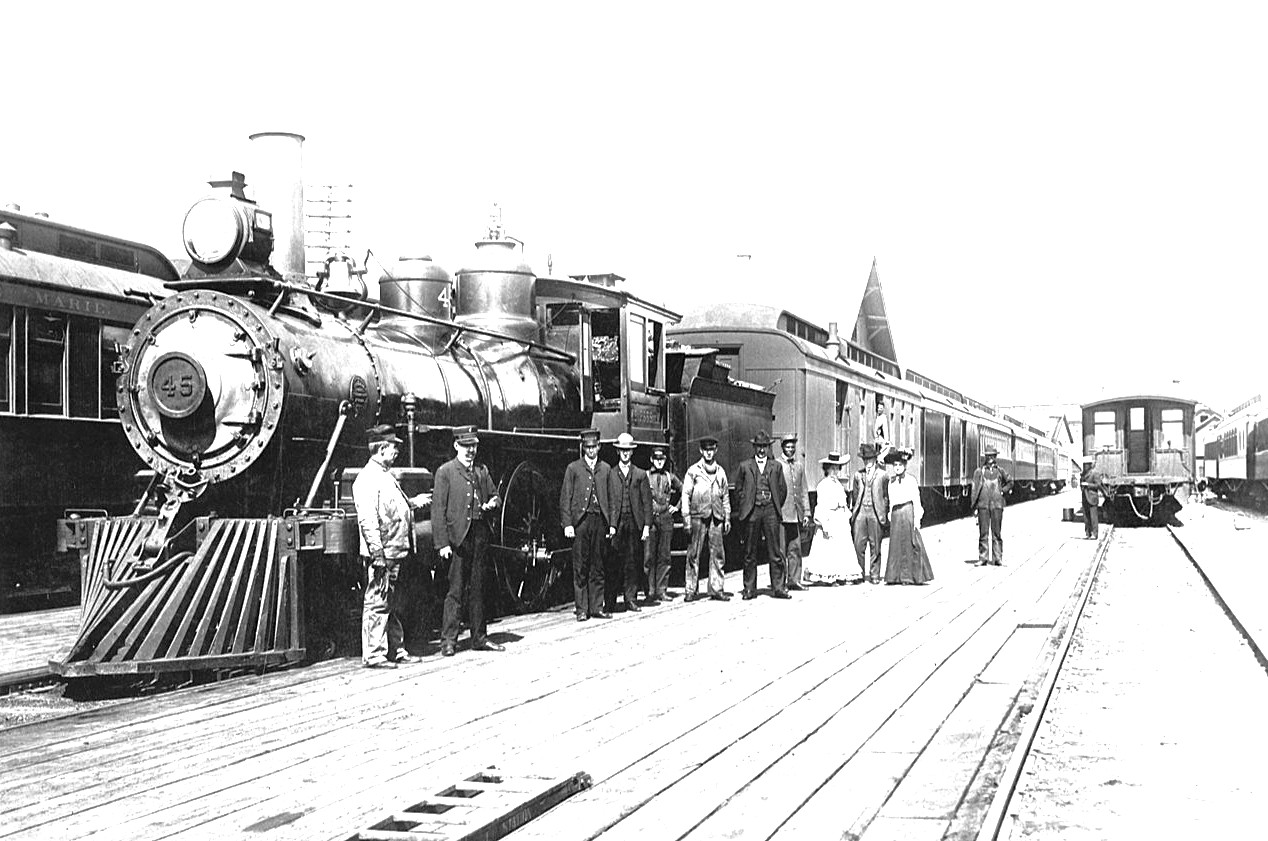
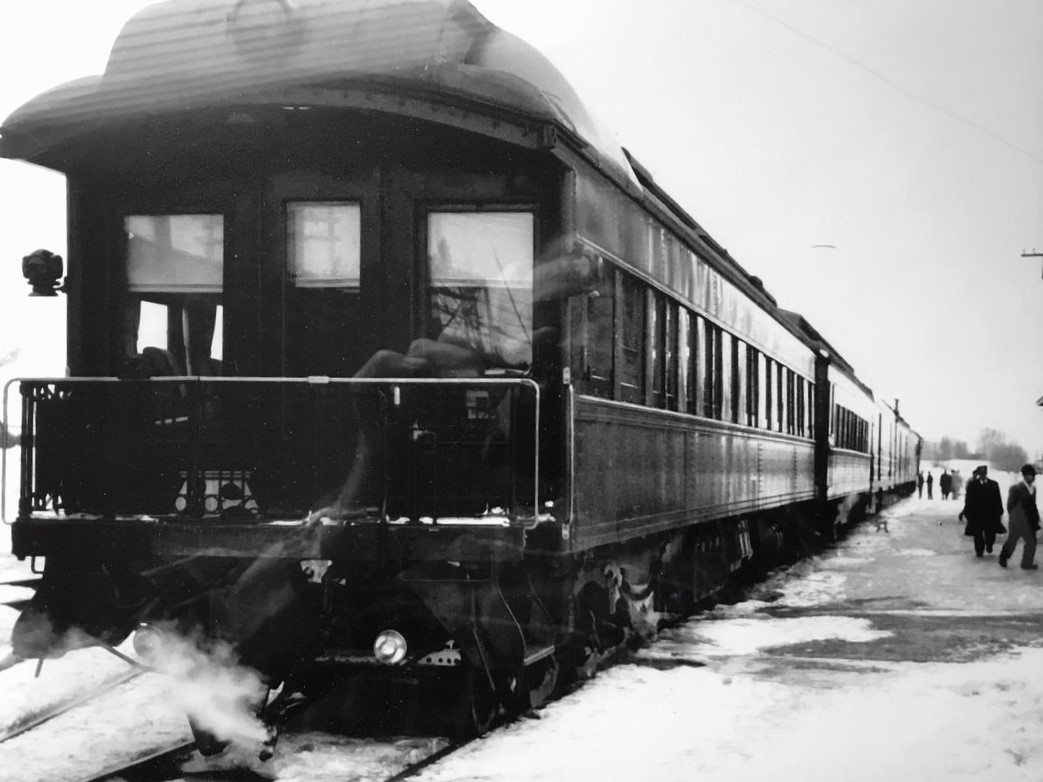
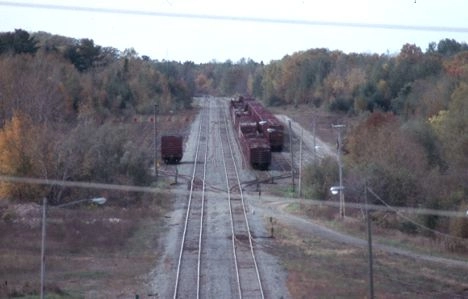
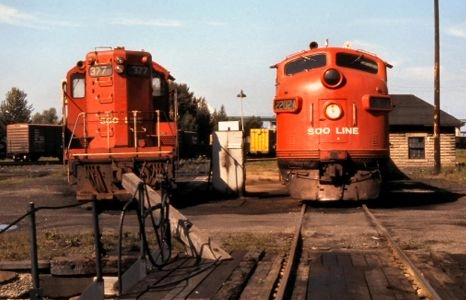 Sault Ste. Marie was settled by Europeans in 1641 at the St. Mary River rapids in what would later be Chippewa County. It was incorporated as the Village of St. Mary in 1849 but annulled in 1851. It was reincorporated in 1879 and as a city in 1881. [MPN]
Sault Ste. Marie was settled by Europeans in 1641 at the St. Mary River rapids in what would later be Chippewa County. It was incorporated as the Village of St. Mary in 1849 but annulled in 1851. It was reincorporated in 1879 and as a city in 1881. [MPN]
The town was home to two railroads. The Duluth, South Shore & Atlantic reached here in 1887 via their Soo Branch from Soo Junction near Newberry. The Soo Line railroad arrived in town the following year in 1888. Both railroads shared a yard west of downtown, and also shared a union depot downtown through their ownership of the sault Ste. Marie Union Depot Company. The depot was reached by a short spur from the main line near the bridge and locks. The two railroads also owned the International Bridge to Sault Ste. Marie, Ontario, through a joint corporation.
Photo info: Top, the Union Depot in a postcard view. Note the closeness of the depot and the Soo locks. 2nd photo, the Atlantic Limited is viewed at the Union Depot. Date unknown. [Soo Line Historical and Technical Society collection]. 3rd image, the last passenger train leaving Sault Ste. Marie on March 5, 1960. This was train No. 7. [Ronald Kaminen photo]. 4th photo, the yard at Sault Ste. Marie in the 1990's, taken from the highway bridge. This yard was shared by the Soo Line and DSS&A. It is now a CN facility. [Shaun O'Day] 5th photo, two Soo Line first generation locomotives sit at the turntable at the roundhouse in the yard. July, 1975 [Rob Kitchen]
Notes
Both railroads used a 227' long bridge (No. 2) over the Soo Power Canal. The bridge was built on stone piers. [CB/MIHX8]
The Sault Ste. Marie Belt Line Railroad ran east along the south side of the power canal and then swung north on the west side of Pickett Street into the Union Carbide Company chemical works on the north side of Portage Avenue and just south of the power plant.
The railroads also had a coaling station which was located 1/2 mile west of the international bridge. The west end of the joint trackage was 1.72 miles west of the international bridge. [CB/MIHX8]
Time Line
1641. Area settled by Europeans.
1849. First incorporated as a village.
1855. Soo lock first established.
1887. The DSS&A arrives via their Soo branch from near Newberry.
1887. Work on the main line begins east and west from Gladstone. The line into the depot at Sault Ste. Marie was completed by December 14th. The bridge over the St. Mary's River was completed December 31 and the rails of the Soo Line and Canadian Pacific were joined that same day. Only a week later, the first through freight train, in 5 sections left Minneapolis with 105 carloads of flour over the new line for the Atlantic coast. Within six months, the Soo Line was operating through sleepers from the Twin Cities to Montreal and Boston. The Montreal sleeper, the last to come off, continued until the first World War period. [EDP-1949-0104]
1887. The Grand Rapids Daily Eagle reported on October 10th that the first regular passenger train on the "Soo" branch of the DSS&A left the Soo at 6 o'clock this morning. Five trains will run daily, making western and eastern connections. The newspaper also said that "The Soo is 'now out of the woods'". [MIHX8]
1887. Roundhouse. The DSS&A roundhouse here was built in 1887 when the line was completed. The roundhouse originally contained 45 bays and extended a full 180 degrees. Overtime, the stalls were reduced to five. They were 80' deep. The inside circumference was 75' and the outside 240'. It was a wood-framed building with a roof pitched slightly to the rear. One wall - originally an interior fire wall - is of brick construction. The turntable was 6' long and rests in a concrete-lined pit 5' deep. It bore the nameplate which rad, "Philadelphia Turntable Company, No. 33" and was probably installed about 1920. [UPM]
1888. The Soo Line railroad also arrives from Trout Lake.
1890. Union Station. The Sault Ste. Marie Union Station was built in 1890 at 566 W. Portage Avenue. The DSS&A and Soo Line used this depot. It is a rectangular building constructed of finished, coursed cut red sandstone. The center section was two stories high with a gabled roof and measuring 50' by 50' while there are two single-story wings with hipped roofs, each 40' wide by 66' long. [UPM]
1900. Railroad Bridge Over Power Canal. In 1900,this bridge was built when the Michigan Lake Superior Power Company constructed its massive power canal through Sault Ste. Marie. It is a four-span steel girder bridge, 15' wide and 225' long, resting on piers and abutments constructed of brick with stone facings. It was built by the Lassac Branch of the American Bridge Company of Chicago. [UPM] It continues to exist in 2016.
1902. The Michigan Commissioner of Railroads approves two grade crossings of the Michigan Lake Superior Power Company's private railroad with the tracks of the DSS&A in the city of Sault Ste. Marie.
1907. The DSS&A had a water tower at Sault Ste. Marie as of 1907. [SSM-19076]
1912. Despondent over the loss of his job as conductor on the DSS&A railroad, William Bell, 48, shot and killed himself in his home this morning. Officials of the road were examining his accounts with the road at the time of the suicide, but have found no shortage. [DET-1912-1005]
1918. The DSS&A had an operator on the 1st and 2nd shifts at this location. [TRT]
1922. The Cadillac Chemical Plant has accepted a proposal to locate a new chemical and mill plant in the Soo. The plant is large and will employ 400 men. Sault Ste. Marie was selected over St. Ignace and Trout Lake, the later because of the tracts of timber owned by the company near that place. [DD-1922-0203]
1960. March 5. The last passenger train leaves out of the Sault Ste. Marie depot. This was Soo Line train No. 7 heading west.
1963. The Soo Carbide Plant will close December 1 which will affect the railroad's volume in the area. In 1962, it had 837 carloads of freight to or from the plant. [EDP-1963-0524]
1965. A new International Bridge is opened between Sault Ste. Marie, MI and Sault Ste. Marie, Ontario. It replaces the St. Mary's River ferries which carried travelers for many years. A $40,300,000 project to rebuild the old Poe Lock, built in 1888 to replace the original Harvey Lock which was built in 1855. [BCE-1965-0713]
1969. Sault Ste. Marie's newest attraction, the Northland Museum, is pushing toward an August 1 opening. The new museum is housed in the former Soo Line Railroad depot and is owned by Luther Sanders, also the owner of the Traverse Bay Woolen Company. Sanders purchased the building and property at auction a year ago and earlier this year purchased the contents of the Cloverland Museum in Calumet. The museum contents all have been shipped to Sault Ste. Marie and are currently being arranged in the building. [EDP-1969-0728]
1972. In a newspaper ad, Montgomery Ward in Sault Ste. Marie announced they are selling two sleepers, noting that they "formerly belonged to the Soo Line railroad". Regularly $239.99, now $189.00 each. [SEN-1972-0127]
1972. March. Soo Line salaries in the Sault totaled $400,000 in 1971. The total figure represents wages paid during the year to 65 full or part-time employees at this major connection with Canada. [SEN-1972-0329'
Industry
- Cadillac-Soo Lumber Company
- Soo carbide Plant - closed in 1963
- Union Carbide Company plant
- Veneer Plant
Bibliography
The following sources are utilized in this website. [SOURCE-YEAR-MMDD-PG]:
- [AAB| = All Aboard!, by Willis Dunbar, Eerdmans Publishing, Grand Rapids ©1969.
- [AAN] = Alpena Argus newspaper.
- [AARQJ] = American Association of Railroads Quiz Jr. pamphlet. © 1956
- [AATHA] = Ann Arbor Railroad Technical and Historical Association newsletter "The Double A"
- [AB] = Information provided at Michigan History Conference from Andrew Bailey, Port Huron, MI

